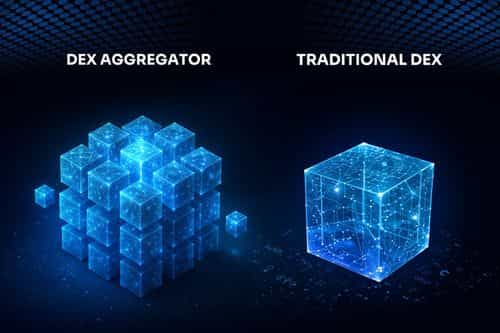Crypto Wallets and Blockchain Technology: How They Work Together


In the rapidly evolving world of digital finance, understanding the synergy between crypto wallets and blockchain technology is essential. These two components form the backbone of decentralized finance (DeFi), enabling secure storage, transfer, and management of digital assets. This article delves into their interconnected roles, highlighting how they collectively empower users in the digital economy.
Understanding Crypto Wallets and Their Role in Blockchain
At the heart of blockchain interactions lies the crypto wallet, a digital tool that allows users to store and manage their cryptocurrencies. Contrary to traditional wallets, crypto wallets don't store currency in a physical sense. Instead, they safeguard the private keys that grant access to one's digital assets on the blockchain. Crypto wallets come in various forms:
"In crypto, your wallet is your identity."
Hot Wallets:
Internet-Connected Wallets Designed for Speed, Convenience, and Daily Crypto Transactions
Hot wallets are connected to the internet, offering high accessibility and ease of use for frequent cryptocurrency transactions. They are ideal for active traders or those who need regular access to their digital funds.
Popular hot wallets like MetaMask (for Ethereum) and Phantom (for Solana) let users swap tokens or interact with dApps in seconds.
Cold Wallets:
Offline, Highly Secure Crypto Storage Solutions for Long-Term Asset Protection
Cold wallets remain disconnected from the internet, providing a strong defense against hacking and malware. These are favored by users prioritizing maximum security, especially for storing large amounts of cryptocurrency long-term. By managing private keys, crypto wallets enable users to send, receive, and monitor their digital assets securely.
Devices like Ledger Nano X or Trezor Model T keep keys offline, trusted by long-term holders for securing Bitcoin or Ethereum.
How Blockchain Technology Powers Crypto Wallets?
Blockchain technology underpins the functionality of crypto wallets, ensuring transparency, security, and decentralization in digital transactions.
Public and Private Keys: The Foundation of Blockchain Security
Blockchain employs public-key cryptography, a system that uses a pair of keys to manage access and ownership of digital assets:
How Blockchain Verifies, Confirms, and Records Transactions in a Secure and Decentralized Manner?
When a transaction is initiated, it undergoes a multi-step verification process involving:
This decentralized verification process eliminates the need for intermediaries, enhancing trust and efficiency in digital transactions.
Benefits of Using Crypto Wallets in a Blockchain Ecosystem
Integrating crypto wallets within the blockchain framework offers numerous advantages, enhancing user experience and security.
Ensuring Security and Control Over Digital Assets
By holding private keys, users maintain full control over their digital assets, reducing reliance on third parties. This self-custody approach minimizes risks associated with centralized exchanges, such as hacking or insolvency.
Enabling Seamless Access to Decentralized Applications
Crypto wallets serve as gateways to decentralized applications (dApps), allowing users to interact with various blockchain-based services, including:
This seamless integration fosters a more inclusive and user-centric digital ecosystem.
Challenges and Advancements in Crypto Wallets and Blockchain Integration
Despite the benefits, integrating crypto wallets with blockchain technology presents challenges:
Advancements are underway to address these issues, including the development of multi-chain wallets, enhanced security protocols, and user-friendly designs.
Conclusion
The interplay between crypto wallets and blockchain technology is foundational to the decentralized digital economy. By understanding their functions and addressing integration challenges, users can harness the full potential of blockchain, fostering a more secure, efficient, and inclusive financial landscape.
Resources
Frequently asked questions
Check out most commonly asked questions, addressed based on community needs. Can't find what you are looking for?
Contact us, our friendly support helps!
What is the difference between hot and cold crypto wallets?
Hot wallets are connected to the internet, offering convenience for frequent transactions, but are more susceptible to online threats. Cold wallets are offline, providing enhanced security for long-term storage.
How do I choose the right crypto wallet for my needs?
Consider factors like security, ease of use, supported cryptocurrencies, and whether you prefer self-custody or third-party management.
Can I recover my crypto assets if I lose my private key?
Losing your private key typically means losing access to your assets. It's crucial to back up your keys securely and consider wallets with recovery options.




